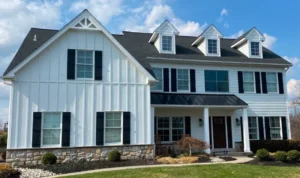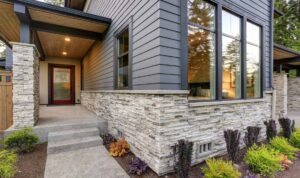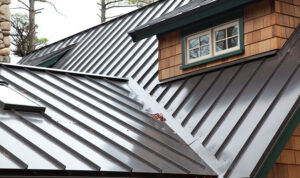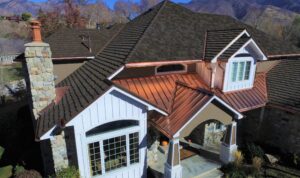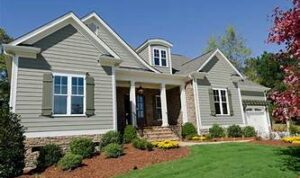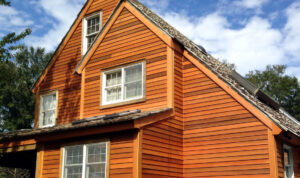Delving into the realm of energy efficient home exteriors, we uncover the essential components that play a pivotal role in enhancing sustainability and reducing energy costs. From insulation to sustainable materials, this guide provides valuable insights for homeowners looking to optimize their living spaces.
As we explore the various aspects of energy efficiency in home exteriors, readers will gain a deeper understanding of the benefits and practical solutions available.
Energy Efficient Home Exteriors Overview
Energy efficiency in home exteriors is crucial for reducing energy consumption, lowering utility bills, and minimizing environmental impact. By implementing energy-efficient practices and materials, homeowners can create a more sustainable living space while enhancing comfort and durability.
Key Elements of an Energy-Efficient Home Exterior
- Proper insulation: Insulating walls, roofs, and floors helps maintain a consistent indoor temperature, reducing the need for heating and cooling.
- High-performance windows: Energy-efficient windows with double or triple glazing and low-E coatings prevent heat transfer, improving insulation and reducing energy loss.
- Air sealing: Sealing gaps and cracks in the building envelope prevents drafts and air leakage, improving overall energy efficiency.
- Solar panels: Installing solar panels on the roof can harness renewable energy from the sun, reducing reliance on traditional power sources.
Benefits of Having an Energy-Efficient Home Exterior
- Lower energy bills: Energy-efficient homes consume less energy for heating, cooling, and lighting, resulting in significant cost savings over time.
- Improved comfort: Proper insulation and air sealing create a more comfortable indoor environment by maintaining consistent temperatures and reducing drafts.
- Reduced environmental impact: By using less energy, energy-efficient homes help lower greenhouse gas emissions and minimize the ecological footprint.
- Increased property value: Energy-efficient features can enhance the resale value of a home, attracting environmentally conscious buyers and improving marketability.
Insulation and Weatherproofing
Insulation and weatherproofing play a crucial role in creating an energy-efficient home exterior. By properly insulating and weatherproofing your home, you can reduce heat loss in the winter and heat gain in the summer, resulting in lower energy bills and a more comfortable living environment.
Types of Insulation
Insulation materials such as fiberglass, cellulose, foam board, and spray foam are commonly used in homes to improve energy efficiency. Fiberglass insulation is cost-effective and easy to install, while foam board provides excellent thermal resistance. Spray foam insulation offers superior air sealing properties, reducing energy loss through air leaks.
Weatherproofing Materials
Weatherproofing materials like caulking, weatherstripping, and house wrap are essential for sealing gaps and preventing moisture infiltration. Caulking is used to seal gaps around windows, doors, and other openings, while weatherstripping helps seal gaps around movable building components. House wrap acts as a barrier against moisture and air infiltration, enhancing the overall energy efficiency of the home.
Comparing Insulation Types
When comparing different types of insulation, it's important to consider factors such as R-value, installation cost, and long-term energy savings. High R-value insulation materials provide better thermal resistance, leading to increased energy efficiency. While initial costs may vary, investing in quality insulation can result in significant energy savings over time.
Sustainable Building Materials
Using sustainable building materials is crucial for creating energy-efficient home exteriors. These materials are not only environmentally friendly but also help in reducing energy consumption and promoting a healthier living environment.
Types of Sustainable Building Materials
- Bamboo: Bamboo is a fast-growing renewable resource that is strong, durable, and aesthetically pleasing. It can be used for flooring, decking, and siding.
- Recycled Steel: Using recycled steel for roofing and framing can help reduce the environmental impact of construction while providing durability and strength.
- Recycled Glass: Recycled glass can be used for countertops, tiles, and insulation, offering a sustainable alternative to traditional materials.
- Cork: Cork is a renewable material harvested from the bark of cork oak trees. It is a great insulator and can be used for flooring, wall coverings, and insulation.
Benefits of Sustainable Materials for Energy Efficiency
Utilizing sustainable building materials can contribute to energy efficiency in various ways. These materials often have high insulation properties, reducing the need for heating and cooling systems
Durability and Effectiveness of Sustainable Materials
Sustainable materials are known for their longevity and effectiveness in the long term. Materials such as bamboo and recycled steel are highly durable, with a lifespan that rivals or exceeds traditional materials. Their ability to withstand harsh weather conditions and resist wear and tear makes them a reliable choice for energy-efficient home exteriors.
Overall, investing in sustainable building materials not only benefits the environment but also ensures a sustainable and efficient home exterior for years to come.
Energy-Efficient Windows and Doors
Energy-efficient windows and doors play a crucial role in creating a sustainable and energy-efficient home. These components help in reducing energy consumption, maintaining indoor comfort, and enhancing the overall efficiency of a building.
Features of Energy-Efficient Windows and Doors
- Low-E Coating: This coating helps in minimizing heat transfer through windows while still allowing natural light to enter.
- Double or Triple Pane Glass: Multiple panes with insulating gas in between provide better insulation and reduce heat loss.
- Proper Seals: Well-fitted seals around windows and doors prevent air leakage, improving energy efficiency.
- Energy Star Certification: Look for windows and doors with Energy Star certification, ensuring they meet high energy efficiency standards.
Impact of Properly Sealed Windows and Doors on Energy Consumption
Properly sealed windows and doors help in keeping the indoor temperature stable by preventing heat loss in winter and heat gain in summer. This reduces the need for heating and cooling systems to work harder, leading to lower energy consumption and utility bills.
Investing in energy-efficient windows and doors not only benefits the environment but also enhances the comfort and value of your home.
Landscaping for Energy Efficiency

Landscaping plays a crucial role in enhancing the energy efficiency of a home exterior by providing natural solutions to regulate temperature and reduce energy consumption.
Strategic Placement of Trees
Strategically planting trees around your home can provide shade during the hot summer months, reducing the need for excessive air conditioning. Deciduous trees are particularly effective as they provide shade in the summer and allow sunlight to filter through in the winter.
Use of Shrubs and Bushes
Planting shrubs and bushes close to the walls of your home can act as insulation, reducing heat transfer in the summer and preventing heat loss in the winter. They also create a buffer zone that helps regulate temperature fluctuations.
Green Roofs and Living Walls
Green roofs and living walls are innovative landscaping techniques that involve planting vegetation on the roof or walls of a building. These features provide additional insulation, absorb sunlight, and reduce the urban heat island effect, leading to a cooler environment inside the home.
Wrap-Up
In conclusion, the quest for energy efficient home exteriors is not just a trend but a crucial step towards a greener and more cost-effective future. By implementing the strategies Artikeld in this guide, homeowners can create spaces that are not only environmentally friendly but also economically sustainable in the long run.
FAQ Summary
What are the key elements of an energy-efficient home exterior?
The key elements include proper insulation, weatherproofing, energy-efficient windows and doors, and strategic landscaping.
How do sustainable building materials contribute to energy efficiency?
Sustainable materials reduce energy consumption by providing better insulation, durability, and long-term effectiveness compared to traditional materials.
What features should one look for in energy-efficient windows and doors?
Features like double or triple glazing, low-E coatings, and proper seals are essential for energy-efficient windows and doors.
How can landscaping help improve the energy efficiency of a home exterior?
Strategic landscaping can provide shade, reduce heat absorption, and create natural windbreaks, all contributing to better energy efficiency.

